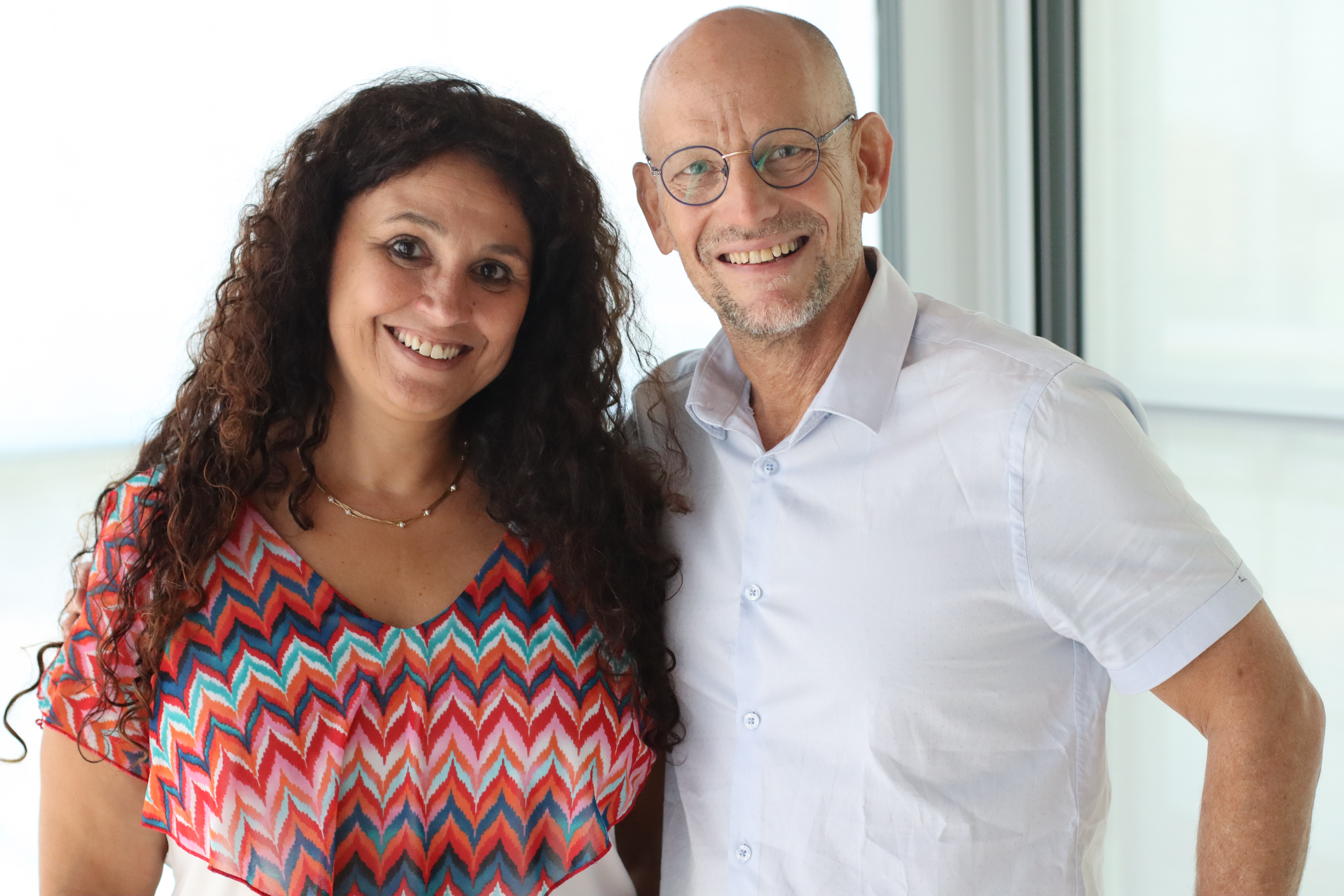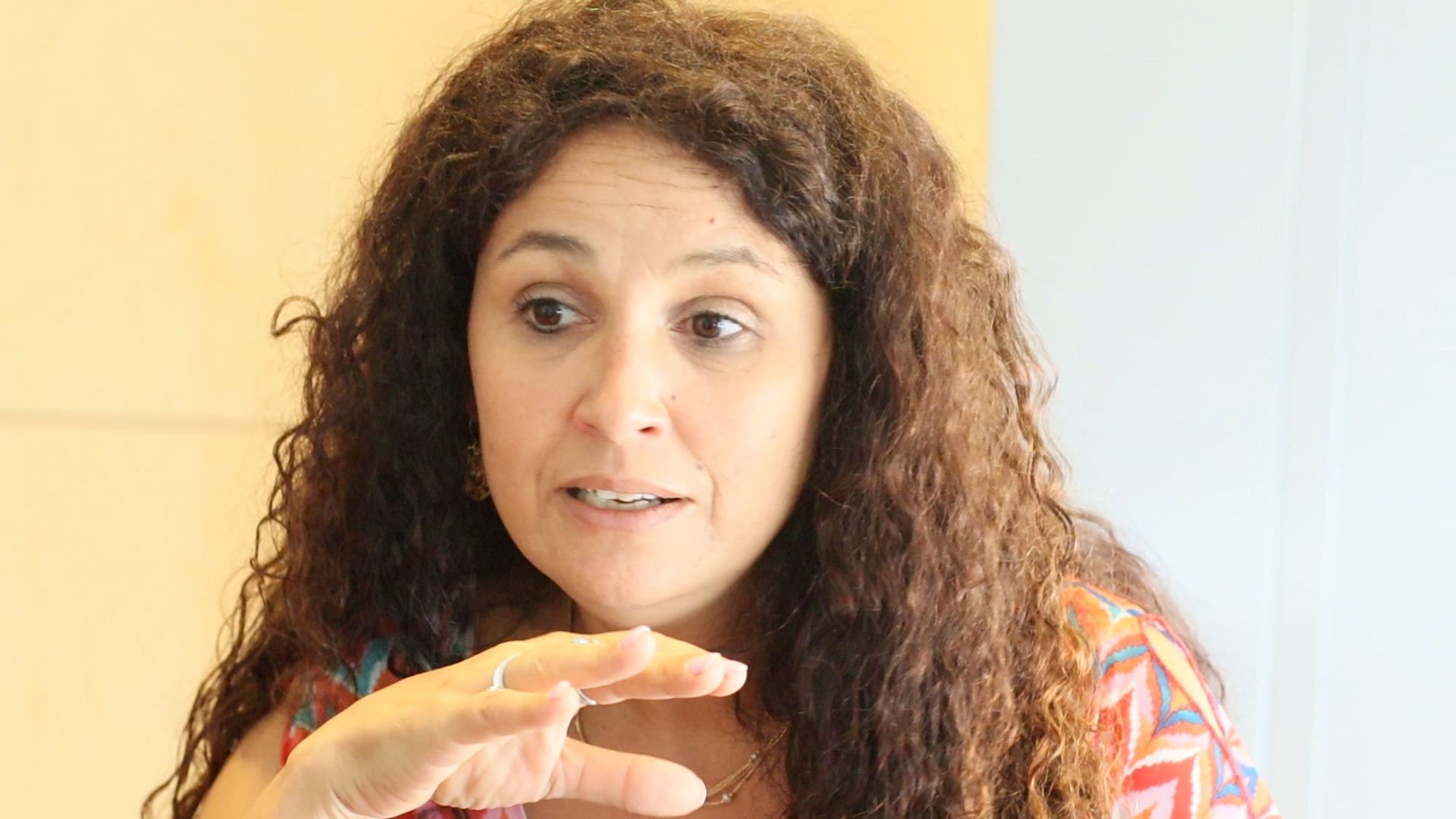Karina Yaniv : “Knowledge is never lost or discarded: the key to the question is knowing when and how we need to use it”
Dr Karina Yanivis renowned for her contributions in the field of vascular development. She is professor of Vascular Disease in the Department of Biological Regulation at the Weizman Institute of science, Rehovot, (Israel). Her laboratory focuses on understanding the mechanisms that control blood and lymphatic vessel formation during embryonic development and in disease. Among other awards, she has received the Israel Cancer Research Foundation Career Development Award, the Werner-Risau-Prize for outstanding research in vascular biology (2007) and the usan G. Komen Young Investigator Scholarship from Lymphatic Research Foundation. Dr Yaniv participated in the CNIC Seminars with the lecture "Control of vascular growth and organ regeneration."
- Your field of research is developmental biology of the cardiovascular system.
My career began in the area of developmental biology. That was the area of my doctoral thesis, and later, for my post-doctoral research, I focused more on the development of the cardiovascular system, using zebrafish as a model. And that is exactly what we do in the laboratory: try to understand how blood vessels, and specifically lymphatic vessels, develop in different organs and how, on the one hand, the vascular system controls each organ and on the other, they facilitate and promote functioning. That is to say, the vascular system must have properties that are intrinsic to each organ to facilitate the function of each cell within each tissue.
- In this respect, Spain has a great tradition in the area of research in developmental biology. Do you collaborate with any Spanish institutions?
I haven't had any formal collaboration, but I did my doctoral research into the neural crest and I remember, for instance, the articles published by Ángela Nieto, who at that time was starting her research into the transcription factors related with the neural crest, which were the 'Bible'. Throughout my career, I have always had contact with researchers in various institutions in Spain. Here at CNIC, I have a relationship with Rui Benedito, as we have known each other for quite a while, since he was a postdoc. But I've never had a formal collaboration agreement like the one we are about to enter into with CNIC.
- Is this your first visit to CNIC?
Yes, it has been my first visit to CNIC, but I have known about the centre for quite some time and, above all, about the research published. It is obviously a centre with a sterling reputation.
- The challenges in developmental biology are not only to generate organs for transplant, but also organ regeneration. What is the current stage of research in this area?
The zebrafish study was a pioneer; the whole idea that the heart can be regenerated arose from the zebrafish research, with models that were first established by Ken Poss and later by Nadia Mercader, who developed an alternative model. These are the models that opened the idea that the heart can be regenerated. And everything that came later, in mice, for instance, was based on this idea that if the zebrafish does it, what have mammals or vertebrates lost that can be reactivated to achieve regeneration of the heart?
And from that moment on, there was an explosion of genetic and molecular data and about cellular mechanisms of how and what happens during the regeneration process, not only in the zebrafish but also in mice. I believe that this field of science has made meteoric advances in 20 years. Since publication of the first studies on zebrafish heart regeneration in 2002 or 2003, to the present day, when we already have some phase 2 or 3 clinical trials, the advances have come at breakneck speed. Hardly 20 years ago, there was no type of research and, in less than two decades, we already have clinical trials. It's incredible!
- This rapid progression, is it the result of technological developments or of previously acquired knowledge?
In my opinion, of acquired knowledge. For instance, in the case of Covid, thanks to acquired knowledge a vaccine has been developed in a way that was unimaginable until now. And it has happened so fast because there have been years of basic research into this virus. This means that researchers in laboratories that were very small have been researching these viruses for years, and in truth, many people, even the researchers themselves, thought: what are we studying this for? What is the clinical relevance of this research?
And that's the beautiful thing about basic research. In the long term, we don't know when this knowledge will be useful, but the more we accumulate, the more we advance, as happened in the case of Covid.
The same thing happened in the field of developmental biology. For decades, the heart has been the subject of research. That is, the change from development to regeneration has a very, very solid knowledge base, which has made such rapid advances possible.
- Do you think that, paradoxically, thanks to the Covid pandemic, society is realising the usefulness of basic research?
I hope so. Society now understands the benefits of basic research better. The problem isn't society, it is politicians. When science and politics meet, there is often a feeling that the objectives are not common, particularly in terms of time frames. Basic research requires more time than, for instance, applied science, which is usually much faster. But cases like this, the case of Covid, are proof that everything we have invested in learning has an application: knowledge is never lost or discarded. The key to the question is knowing when and how we need to use it.
- Do you think we should not distinguish so much between basic and applied research?
I believe that the biggest problem lies in expecting one researcher to take on the whole process. Some researchers are highly focused on basic research, and that is their skill; others are very good at applied science, and excel at making this translation from basic research.
What I think is very good, what I have seen at CNIC, is this separation. What I mean is that I, with a heavy basic research focus, am sitting next to a colleague with a more clinical focus, and another who has a much more translational approach. So, if the three of us communicate with each other, it is much easier to move on in a project than if a single person is responsible for all of the different stages.

- You have also researched the role of LDL cholesterol and cancer.
We know that cholesterol has highly beneficial functions for the organism that go beyond what happens when it accumulates in places where it shouldn't. Our laboratory discovered that there are other functions of the 'bad' cholesterol LDL molecule, which has other effects on the cells that form the blood vessels. And this result, for instance, may be very positive in the case of tumours, which is something we are studying in fish and mice. When mice have high cholesterol levels they have a lower tendency to develop aggressive tumours, because their blood vessels reproduce less. It is like a balance. The same molecule may have very negative effects but also very positive ones. The idea is to try to understand the mechanism of action in this context versus the other scenario and see how they can be combined.
The zebrafish model gave us all the basic data to understand how the molecule functions, but we have reached the limits of what the fish can give us in this specific project, and we need to move on to the mouse model. The problem is that the whole lipid system of the mouse is a little different to that of humans, so the results we obtain for mice are not necessarily related with what occurs in humans. The idea, in this project, would be to go directly to large population studies such as, for instance, the CNIC's PESA study.
I am a great fan of basic research, but not for everything; you can't impose a model. You also have to know when to say 'this is as far as this project can go' and to progress, it needs to move on to another level of research.
- How far are we from the possibility of regenerating hearts?
A lot closer than we imagined we would be when these studies began. I don't know if we can call it regeneration, because regeneration is too grand a term, but if we talk in terms of re-establishing function, or achieving what I won't call a cure, because I think the only cures in medicine are antibiotics or surgery, then we are much closer than we believe.
- What does inclusive science mean to you?
It's a subject that has a much wider meaning than we think. It has many facets: a cultural one, the education we receive from when we are girls about what our role is as women, as mothers, as workers and also as scientists. On the other hand, the woman as a leader, a director, as the one who leads movement rather than one who follows. This is one of the most difficult hurdles for women to overcome. Many women reach at a time when they decide to lead, when they say "I want to be a leader". This takes us much more time than men, who seem to have been born with the capacity of wanting to lead.
And there is also the issue of support in our environment. How we can make women feel that society supports them to reach these roles is something that we are still very, very far away from.
My work alongside other female researchers at the Weizmann Institute covers many fronts. On the one hand, speaking to girls from an early age. One of the great problems is that we have very few female reference figures, women to look up to and say, "That person may be a scientist, a director, a mother, a wife, but she can have a life and enjoy herself". Because we mustn't forget that we also want to enjoy life, not just work.
I see that as my greatest challenge: if I can show by my example that it can be done, and if a young student says "if she can do it, so can I", I would feel fulfilled.
- How can that work of creating awareness be achieved?
Several of the women at the Weizmann Institute have become ambassadors for Women in Science. Not just aimed at students, but also at men and group leaders We are there to tell them 'when you write a letter of recommendation, be careful not to make a difference between a male and a female student'. We tend, for instance, when speaking about a man, to use adjectives like brilliant or hard-working, whereas if we talk about a woman, we say she is pleasant, helpful to everyone or that she teaches everyone. And maybe they don't notice, because nobody does it in bad faith. When a woman is assertive, she is automatically labelled aggressive. When she is pleasant, they think she is not serious enough. We should take great care with this sort of thing, and it's important that we continue to remind people, without being obsessive. It's painstaking work and I believe, in the long term, if we manage to make this topic part of the discussion, make people bear it in mind, that will be the start of change.
- Dr Karina Yaniv presented the seminar "Control of vascular growth and organ regeneration" at the invitation of Dr Miguel Torres.











